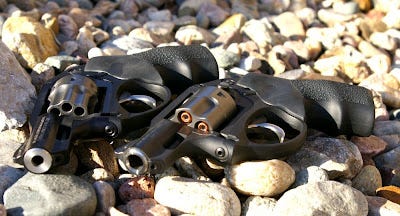RUGER LCR-357 LCR-22 REVIEW

RUGER LCR-357 LCR-22 REVIEW
Oh how guns have changed. Back when I was a kid, if someone suggested plastic on a pistol they were looked at strangely, if you would have suggested a polymer based revolver... well you could have been institutionalized. Although Glock initially broke through the polymer barrier for semi-auto pistols, it is Ruger who has cross…
Keep reading with a 7-day free trial
Subscribe to Major Pandemic - MajorPandemic.com to keep reading this post and get 7 days of free access to the full post archives.


